Home
Hamburg-Rothenburgsort (Privates Kinderkrankenhaus Hamburg
Rothenburgsort)
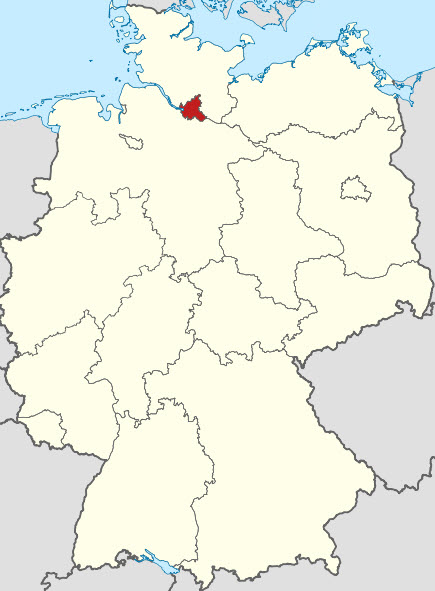
The Kinderfachabteilung in Hamburg-Rothenburgsort is unusual because it was
established in a private children's hospital. It was one of two special
children's wards in the city of Hamburg. The Kinderkrankenhaus was
established in 1898 on the basis of a charitable foundation in the populated
workers' district of Rothenburgsort. The building that housed the clinic and
during World War II the special children's ward was built in in 1922 (Brahm
2007: 37).
Source: Brahm, pp. 37, 57.
The Landgericht Hamburg noted in 1949 that 56 children died in the special
children's ward. Based on G. Aly's first public study on the subject matter
(1984; see also below) it was believed that the ward was not physically
separated from other stations, and to have existed from between January 1941
until at least 1942, but the medical dissertation by Dr. Marc Burlon (2010)
in particular shed new light on the special children's ward.
According to Dr. Burlon, 64 children were admitted to the special children's
ward (this number includes 7 children who were admitted and/or treated in
both special children's wards in Hamburg), of whom 60 died (2010, pp.
145-147), and three were transferred to the special children's ward Hamburg
Langenhorn and from there to Meseritz-Obrawalde. The first of these children
died in June 1940, but it is uncertain and perhaps doubtful whether this
occurred as part of the Reichsausschussverfahren or was carried out before
the special children's ward was in place (see Benzenhöfer 2008, p. 91). In
1943 the hospital was heavily bombed and the operation of the entire
hospital ceased for some time in that year. The last child died in April
1945, indicative of the fact that the special children's ward existed until
the end of the war. The admission records are no longer extant for 1942 and
1943, so that there is reason to believe that the number of admitted
children was considerably higher (Burlon 2010, p. 149). The investigations
of the Landgericht Hamburg in the post-war period referred to 200 children
who had been admitted by the Reichsausschuss.
It does indeed appear that the special children's ward was not a physically
separated entity. An usual circumstance of Hamburg Rothenburgsort was that
the public health officer Dr. Hermann Sieveking provided a separate
assessment of those children who had been reported to the Reichsausschuss
about their "worth to live" before they were killed. (see Burlon 2010, p. 60
n. 213).
Dr. Wilhelm Bayer became the medical director of the clinic in 1934 after
the previous medical director and his deputy had been dismissed for being
Jewish. He was directly responsible for the special children's ward. As the
new research by the journalist Andreas Babel shows, he was assisted by
the following assistant physicians:
Drs. Lotte Albers,. Ilse Bauer, Ursula Bensel, Ilse Breitfort, Ortrud von
Lamezan, Maria Lange-de la Camp, Emma Lüthje, Ursula Petersen, Gisela
Schwabe, and Ingeborg Wetzel.
A. Babel shows that four physicians declined becoming involved in
"euthanasia" crimes:
Drs. Lydia Fontana, Ingeborg Sammet, Margarita van der Borg, and Liesel
Deidesheimer.
Dr. Helene Sonnemann was Dr. Bayer's deputy from early 1942 to October 1943,
when after the fire bombing of the clinic she resettled with personnel to
the city of Celle, where she was the director of the general hospital until
1951. In 1948 she admitted to having been personally involved in the killing
of children in the special children's ward during her time there and is
named in the indictment of the state attorney's office as having carried out
most of the killings (see Burlon 2010, p. 89; Reiter 2011), but she was not
prosecuted.
After World War II Dr. Bayer was suspended and dismissed, but the criminal
investigations against him and others were stopped by the state court
Hamburg in 1949, for the court held that "the shortening of life unworthy of
living" does "not deviate from general moral law." None of the physicians
lost his or her license. A further review in 1960 led to the same result: no
trial was held. Dr. Bayer worked as a pediatrician in Hamburg and died in
1972 (Burlon 2010, p. 235). Dr. Sonnemann became director of the general
hospital in Celle and deputy director. Her story is reported in a newspaper
articles (1; 2; 3), and a definitive study on her was published in
2010 (Reiter 2010). She died in 1998. After World War II, Dr. Wetzel had a
pediatric practice in Hamburg, marrying in 1963 a judge who was involved in
the early investigations of the killings, Walter Tyrolf, who himself had
asked for the death sentence for causa such as "racial defilement" as a
prosecutor during World War II. Dr. Breitfort worked in the municipal
children's clinic in Essen. Dr. Lange-de la Camp was a general practitioner
in Hamburg (Burlon 2010, p. 235). Dr. Petersen continued practicing medicine
at the Rothenburgsort children's clinic (see Thevs 2011, p. 160; the
post-war careers of the other female physicians are described by Babel
2015).
Following the preparation of an indictment against Lensch and Struve in
1973, the director of the Alsterdorf institutions and the director of the
general department of health during the Nazi period, which resulted in the
collection of a large amount of information on medical crimes in Hamburg, a
group of historical researchers conducted a meeting under the title "Healing
and Killing in the Exemplary Gau Hamburg" (Heilen und Vernichten im
Mustergau Hamburg) with an exhibit in Hamburg in 1983, and a book followed a
year later. In it, publicist G. Aly presented the first systematic
investigation into the special children's wards in Hamburg. Still, a history
of the clinic published in 1986 mentioned the killing of children but did so
in the context of a rather exculpatory account of Dr. Bayer's activities as
director of the clinic (see Burlon 2010, p. 53). Then in 1996 a member of
the staff council (Personalrat) at the Hygiene Institut, which had moved
into the building in 1986, saw a reference to the murder of children in the
children's clinic in Rothenburgsort during the Nazi period (on that occasion
of the clinic's closing in that year it appears that a look back at its
history included references to the murder of children). The staff council
took up some inquiries, and with the the support of the administration and
under collaboration with staff of the institute as well as the former
clinic, a commemorative display was placed on the wall next to the
historical entrance to the clinic on 9 November 1999, the day of
commemoration for the Jewish victims of the November pogroms in 1938. An
event was also held on that day and a booklet was published. A recent
history of the building exists as well (Brahm 2007).
Source: author
The inscription reads: "In this building more than 50 disabled
children were killed between 1941 and 1945. An team of assessors classified
them as 'unworthy life' and admitted them to special children's wards to be
killed there. The Hamburg department of health was involved in this process.
Hamburg's public health officials supervised the children's admission and
their killing. Doctors at the Children's Hospital carried it out. None of
the parties were held criminally liable" (In diesem Gebäude wurden zwischen
1941 und 1945 mehr als 50 behinderte Kinder getötet. Ein Gutachterausschuss
stufte sie als „unwertes Leben“ ein und wies sie zur Tötung in die
Kinderfachabteilungen ein. Die Hamburger Gesundheitsabteilung war daran
beteiligt. Hamburger Amtsärzte überwachten die Einweisung und Tötung der
Kinder. Ärzte des Kinderkrankenhauses führten sie durch. Keiner der
Beteiligten wurden dafür gerichtlich belangt). There is no entry for this
memorial in the guide to Hamburg's memorials for victims of the years
1933-1945 (Garbe and Klingel 2008).
 Source: http://www.hamburg.de/nachrichten/1839886/stolpersteine.html
Source: http://www.hamburg.de/nachrichten/1839886/stolpersteine.html
Almost ten years later, in October 2009, 35 "stumbling blocks"
(Stolpersteine) were placed in front of the building of the former
children's clinic, after 33 victims had been identified by name. Another
stumbling block is in memory of its former director Dr. Stamm, and the 35th
is for the victims who have not been identified. (The location is unusual
for stumbling blocks, as they are normally placed in front of the home
dwellings of victims.) Reports can be found here and here.
The names on the stumbling blocks are as follows:
Andreas Ahlemann, Rita Ahrens, Ursula Bade, Hermann Beekhuis, Ute Conrad,
Helga Deede, Jürgen Dobbert, Anneliese Drost, Siegfried [Findelkind], Rolf
Förster, Volker Grimm, Antje Hinrichs, Lisa Huesmann, Gundula Johns, Peter
Löding, Angela Lucassen, Elfriede Maaker, Werner Mohr, Renate Müller, Harald
Noll, Agnes Petersen, Renate Pöhls, Gebhard Pribbenow, Hannelore Scholz,
Doris Schreiber, Ilse Angelika Schultz, Dagmar Schulz, Magdalene Schütte,
Gretel Schwieger, Brunhilde Stobbe, Hans Tammling, Peter Timm, Heinz
Weidenhausen, Renate Wilken, Horst Willhöft, and Dr. Carl Stamm.
The public Internet site of the city of Hamburg offers the document of the
commemorative text of 1999 in full (see below) and provides references to
news in reference to the "stumbling blocks."
Aside from Dr. Burlon's dissertation, in 2011, H. Thevs published a book on
the biography of the victims, and R. Reiter a book on the biography of Dr.
Sonnemann that contains a masterful analysis of her involvement in the
murder of children.
On 12 September 2012 the remains of 5 children discovered in the archive of
the neuropathological department (Archiv der Neuropathologischen Abteilung)
of the university clinic Hamburg-Eppendorf were buried at the cemetery (see
here).
These children died in the Kinderfachabteilungen Langenhorn and
Rothenburgsort. Their names are:
Gerda Behrmann (1939-1941)
Werner Hammerich (1940-1941)
Marianne Harms (1940-1941)
Dieter Kullak (1938-1942)
Agnes Erna Petersen (1938-1941)
A brief clip from an TV station is captured here
(source:
NDR.de; educational use in the context of "fair use" only).
In early 2014 an exhibit addressed "children's euthanasia." The exhibit is
entitled 'Euthanasia: The Murder of People with Disabilities and Mental
Illnesses in Hamburg during National Socialism" (Euthanasie. Die Morde an
Menschen mit Behinderungen und psychischen Erkrankungen in Hamburg im
Nationalsozialismus). The exhibit was accompanied by a series of
lectures and other activities. Information is provided in this flyer,
and there is an exhibit catalog (Diercks 2014). The exhibit includes a
section on "children's euthanasia" and features short biographies of the
victims Ilse Schultz, Gebhard Pribbernow, and Hannelore Scholz (as well as
minors Rudolf Haubenreisser, Alfred Rahnert, and Irma Sperling, who died
elsewhere).
A book on the occasion of the 125th anniversary of the Universitätsklinikum
Hamburg-Eppendorf in 2014 addressed the involvement of Hamburg's "special
children's wards" in medicine under National Socialism, as well as theses
crimes and National Socialism at the clinic and in Hamburg in general
(Bussche and Bottin 2014).
In 2015 Andreas Babel published a book detailing the history of female
resident physicians at Rothenburgsort, of whom 11 murdered children (Babel
2015). Stories about individual physicians have been addressed in the local
press (for example, see here).
Literature
Babel, Andreas. 2011. "Der Fall Dr. Helene Sonnemann in Celle." Pp. 219-30
in Kindermord und "Kinderfachabteilungen"
im Nationalsozialismus: Gedenken und Forschung, edited by Lutz
Kaelber und Raimond Reiter. Hamburg: Lang.
———. 2015. Kindermord im Krankenhaus:
Warum Mediziner während des Nationalsozialismus in Rothenburgsort
behinderte Kinder töteten. Bremen: Edition Falkenberg.
Benzenhöfer, Udo. 2003. "Genese und Struktur der
'NS-Kinder- und Jugendlicheneuthanasie.'" Monatsschrift
für Kinderheilkunde 151: 1012-1019.
———. 2008. Der Fall Leipzig Leipzig
(alias Fall "Kind Knauer") und die Planung der NS-"Kindereuthanasie."
Verlag : Klemm u. Oelschläger.
Burlon, Marc. 2010. "Die 'Euthanasie' an Kindern während des
Nationalsozialismus in den zwei Hamburger Kinderfachabteilungen." Medical
Dissertation, University of Hamburg. Available at http://www.sub.uni-hamburg.de/opus/volltexte/2010/4578/pdf/Kindereuthanasie_Hamburg.pdf
———. 2011. "'Ein erlaubter nützlicher Akt …': Die Tötungen in den Hamburger
'Kinderfachabteilungen.'" Pp. 77-90 in Kindermord
und "Kinderfachabteilungen" im Nationalsozialismus: Gedenken und Forschung,
edited by Lutz Kaelber und Raimond Reiter. Hamburg: Lang.
Brahm, Felix. 2007. Lehren, Heilen,
Überwachen: Die wechselvolle Geschichte eines historischen
Gebäudekomplexes in Hamburg-Rothenburgsort. Hamburg: Institut für
Hygiene und Umwelt.
Bussche, Hendrik van den, and Angela Bottin. 2014. Die
Hamburger Universitätsmedizin im Nationalsozialismus: Forschung, Lehre,
Krankenversorgung. Berlin: Reimer.
Diercks, Herbert. 2014. "Euthanasie": Die
Morde an Menschen mit Behinderungen und psychischen Erkrankungen in
Hamburg in Nationalsozialismus. Hamburg: KZ-Gedenkstätte
Neuengamme.
Garbe, Detlef, and Karsten Klingel. 2008. Gedenkstätten
in Hamburg: Ein Wegweiser zu Stätten der Erinnerung an die Jahre 1933-1945.
Rev. ed. Hamburg: Landeszentrale für politische Bildung.
Götz, Aly. 1984. "Der Mord an behinderten Hamburger Kindern zwischen 1939
und 1945." Pp. 147-55 in Heilen und
Vernichten im Mustergau Hamburg: Bevölkerungs- und Gesundheitspolitik im
Dritten Reich, edited by A. Ebbinghaus, H. Kaupen-Haas and K.-H.
Roth. Hamburg: Konkret Literatur Verlag.
Grabitz, Helge. 1999. Täter und Gehilfen
des Endlösungswahns: Hamburger Verfahren wegen NS-Gewaltverbrechen
1946-1996. Hamburg: Ergebnisse Verlag, pp.65-68.
Holthusen, Wilhelm, and Gerhard Ruhrmann. 1986. "Das Kinderkrankenhaus
Hamburg-Rothenburgsort (1898-1982): Seine Entstehungsgeschichte und sein
Ende (Teil I)." Hamburger Ärzteblatt 40,
10: 312-6; "Das Kinderkrankenhaus Hamburg-Rothenburgsort (1898-1982): Seine
Entstehungsgeschichte und sein Ende (Teil II)." Hamburger
Ärzteblatt 40, 11: 363-5; "Das Kinderkrankenhaus
Hamburg-Rothenburgsort (1898-1982): Seine Entstehungsgeschichte und sein
Ende (Teil III)." Hamburger Ärzteblatt 40,
10: 403-7.
Hygiene Institut Hamburg. 1999. Gedenkschrift
zur
Erinnerung an Kinderopfer in der NS-Zeit. Hamburg: Hygiene Institut
Hamburg. Available at http://www.hamburg.de/contentblob/114616/data/gedenkschrift.pdf
Puvogel, Ulrike, and Martin Stankowski. 1996. Gedenkstätten
für die Opfer des Nationalsozialismus, vol. 1. 2d ed. Bonn:
Bundeszentrale für politische Bildung. Available at http://www.bpb.de/files/5JOYKJ.pdf.
Reiter, Raimond. 2010. Dr. Helene
Darges-Sonnemann: Erfolgreiche Kinderärztin und Verstrickung in
NS-Verbrechen. Celle: Stadtarchiv Celle.
Thevs, Hildegard. 2011. Stolpersteine in
Hamburg-Rothenburgsort: Biographische Spurensuche. Hamburg:
Landeszentrale für politische Bildung.
Topp,
Sascha.
2004. “Der ‘Reichsausschuss zur wissenschaftlichen Erfassung erb- und
anlagebedingter schwerer Leiden’: Zur Organisation der Ermordung
minderjähriger Kranker im Nationalsozialismus 1939-1945.” Pp. 17-54 in Kinder
in der NS-Psychiatrie, edited by Thomas Beddies and Kristina Hübener.
Berlin-Brandenburg: Be.bra Wissenschaft.
———. 2005. "Der 'Reichsausschuß zur wissenschaftlichen
Erfassung erb- und anlagebedingter schwerer Leiden': Die Ermordung
minderjähriger Kranker im Nationalsozialismus 1939-1945." Master's Thesis
in History, University of Berlin.
———. 2010. "'Meldung eines Falles von Idiotie
Hydrocephalus': Die NS-'Kindereuthanasie' am Beispiel der
Krankengeschichte von Ilse Angelika S." Pp. 189-205 in Krieg
und Psychiatrie 1914-1950, edited by Babette Quinkert, Philip
Rauh, and Ulrike Winkler. Göttingen: Wallstein.
Wunder,
Michael, Ingrid Genkel, and Harald Jenner. 1988. Auf
dieser schiefen Ebene gibt es kein Halten mehr: Die Alsterdorfer
Anstalten im Nationalsozialismus. Hamburg: Agentur des Rauhen
Hauses.
Last updated on 5
March 2015
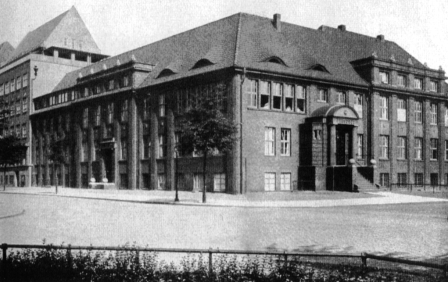
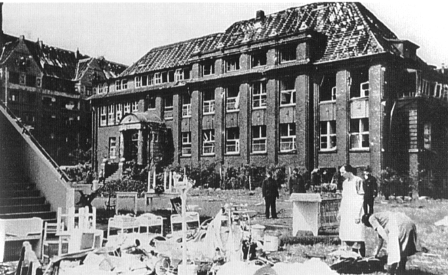



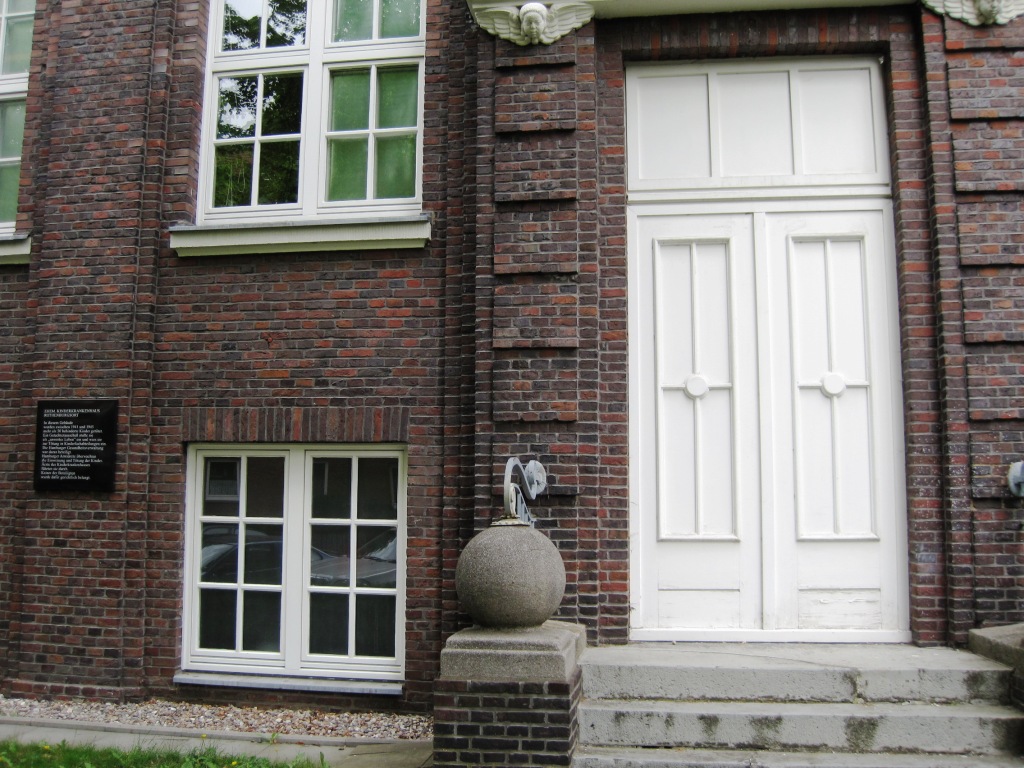
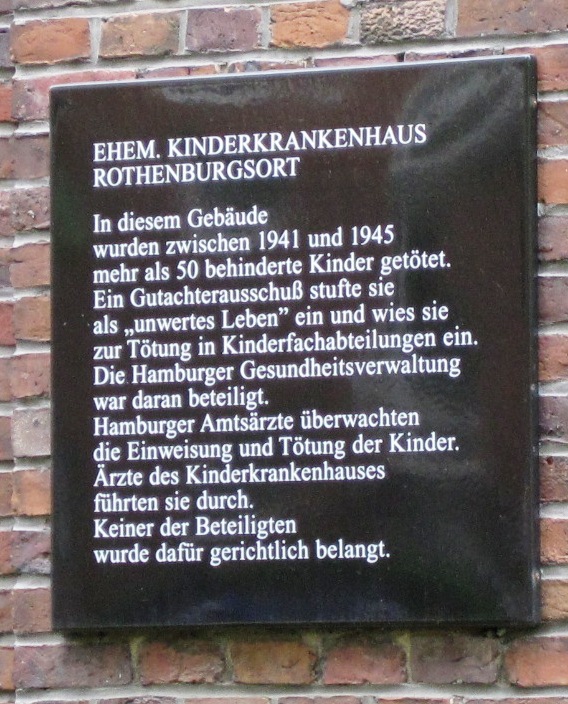
 Source: http://www.hamburg.de/nachrichten/1839886/stolpersteine.html
Source: http://www.hamburg.de/nachrichten/1839886/stolpersteine.html